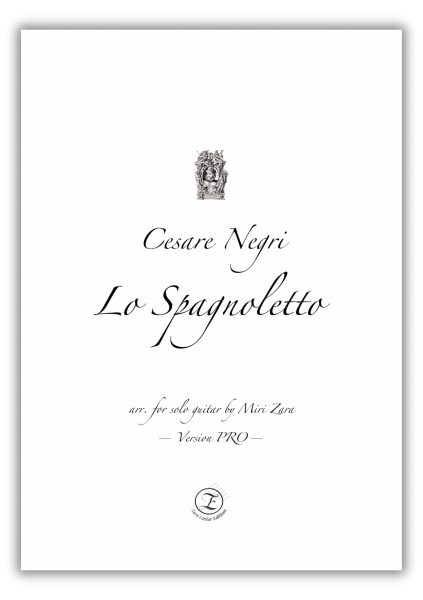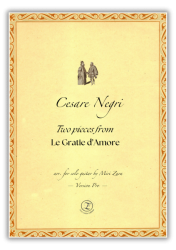

Cesare Negri - Lo Spagnoletto
| Type of Music Notation: | Standard+Tabs |
| Format: | |
| Number of pages or Backing tracks: | 6 |
Browse all pages in unique Flip-book preview with audio MIDI
Cesare Negri (1535 – 1605) was an Italian dancer and choreographer. He was nicknamed il Trombone, an ugly or jocular name for someone "who likes to blow his own horn". Born in Milan, he founded a dance academy there in 1554. He was an active court choreographer for the nobility in Milan. He wrote Le Gratie d'Amore, the first text on ballet theory to expound the principle of the five basic positions. It was republished in 1604 as Nuove Inventioni di Balli (New Inventions of the Dance).
One of the most famous compositions from the le Gratie d`Amore collection is Lo Spagnoletto. The original written versions and arrangements seemed too simple and rather "boring" to me. In the Renaissance, improvisation, the development of a musical theme and ornamentation played an important role. At first, the musician played the basic main theme and then varied it in his own way. The written notation of some ornaments does not always match the way of playing.
That is, it is written differently, played differently. That's why I prefer to add an explanation and the actual form of the ornaments. For players, these arrangements already assume higher technical skill.


.jpeg)




